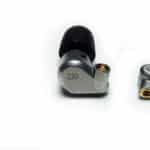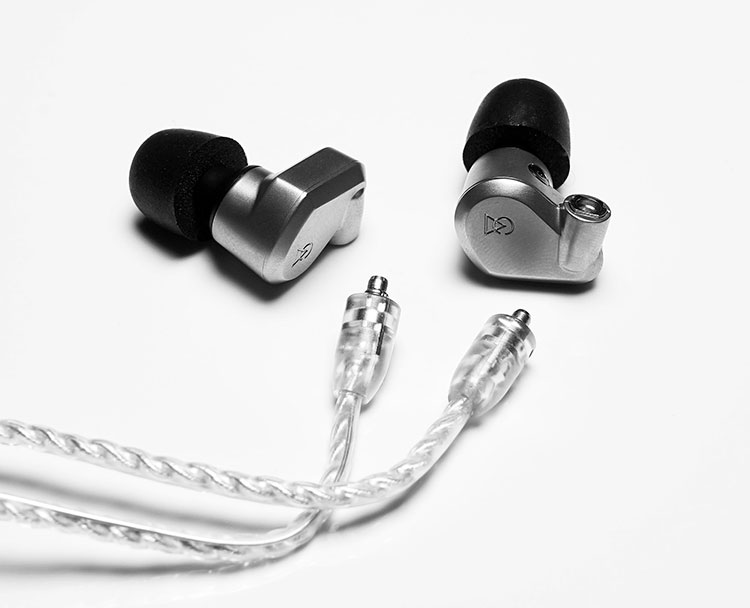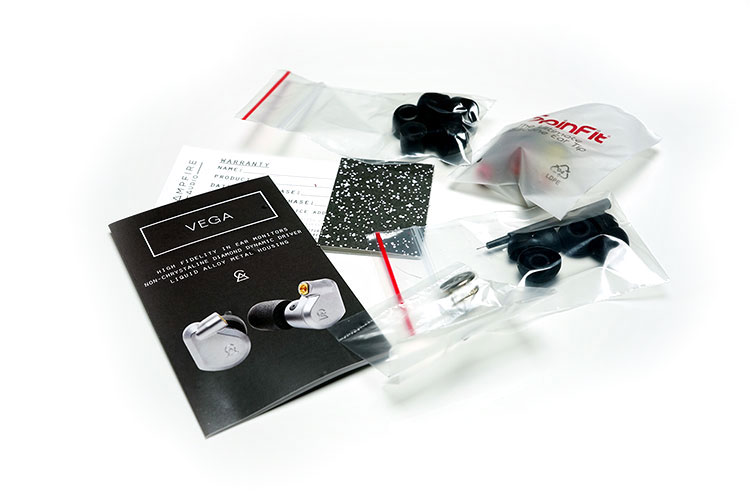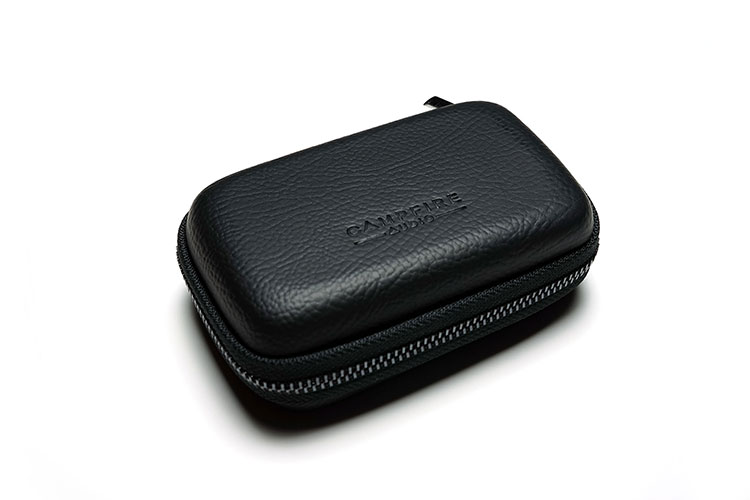This is a review of the Campfire Audio Vega which is their flagship universal monitor featuring an 8.5mm non-crystalline Diamond Dynamic Driver. It is priced at $1299.
Disclaimer: This is a sample in exchange for our honest opinion. Headfonics is an independent website with no affiliate links or services. We thank Campfire Audio for this opportunity.
To read more about Campfire Audio products we have previously featured on Headfonics click here.
Note, this article follows our latest scoring guidelines which you can read up on here.
Campfire Audio must be one of the hardest-working teams in the audio business right now with not just one, but three new IEM releases this month on top of the previous 5 IEMs they put out on the market in the last 18 months.
That is a total of 8 IEMs, all with a specific audience in mind, a specific type of technology in use, and build quality that I know from personally speaking to the guys at the CA office is just analyzed over and over for just the right blend and feel.
Bear in mind CA is boutique, they are a small but hard-working team but nothing on the scale of say Oppos or Sennheiser so to get 8 onto the retail shelve in this space of time is phenomenal.
Out of those original five, I just loved their Andromeda 5 BA design and I am not the only one. It was and still is a commercial and critical success and highly thought of. It always seems to be on backorder also so I presume demand is outstripping supply.
Yet that was just a few months ago and here we are again talking about new models called the Vega, Lyra II, and the Dorado. I can’t keep up, but I say that in a very positive pitch because personally, I think these new releases are just a bit special and offer something very different.
What Is The Pitch?
All three new designs have a very definite pitch to dynamic drivers this time around. Previously, the bias was to BA designs with only the Lyra bucking the trend.
The Lyra was the first to hit the ground for Campfire Audio and whilst it was a very solid offering I could see there was a lot of learning in the process in terms of design, cable, and audible qualities in a DD design.
Fast forward to 2016 and the headline-grabbing release right now is the Vega which is a single dynamic driver universal IEM priced at $1299.00, making it the most ambitious CA release to date.
Diamond Dynamic Driver
This is not just any universal driver and despite the similarity of the form factor to the original Lyra, it is not the same build material quality either. The driver being used is an 8.5mm non-crystalline Diamond Dynamic Driver in what Campfire Audio claims to be the world’s first in commercial IEM use.
The driver is just 9um thick and coated with an ADLC non-crystalline diamond-carbon material. Neodymium magnets are added for the magnetic field around the voice coils. They generate a ton of magnetic force, more so than generic similar-sized ferrite magnets.
In theory, this should produce a very resolving quick-paced, and responsive dynamic driver with excellent low performance compared to regular dynamic designs.
Liquid Alloy Metal Housing
The second big pitch is housing materials. By far, the original Lyra housing form factor was the comfiest of the original line up and it seems CA has noticed this also with the Vega adopting a similar design.
Naturally being a DD the adoption of the original design is much easier but you have to remember that one of the other new releases the Dorado is a hybrid so there was a concerted attempt to have this design permeate right throughout the latest units.
However, CA didn’t simply redeploy the old Lyra housing, they instead brought out a brand new liquid alloy metal housing in another world’s first pitch.
The big concept here is not just simply the huge upgrade in durability and strength but also the acoustical properties that go with it. CA believe they have delivered on a sonically superior and more durable housing to best display the strengths of the DD driver.
Design
The liquid metal alloy build is something special. It is incredibly smooth with its PVD finish, much like the original Lyra in that respect but it feels far more solid in the hand. The seam lines from the shell to the faceplate are also far more discreet with only the tiniest line at the top and bottom giving away its three-piece build design.
This time the Vega’s housing comes in a silver/gray PVD finish, unlike the older Lyra which was a black ceramic enclosure. PVD is a more durable finish when it comes to the odd knocks and bumps so it is unlikely you will see much in the way of chips and paint scraping off with the Vega.
Interrupting the otherwise monotone gray shell is the small circular black bass port which is in the same place as the Lyra I just below the base of the stem.
The front of the Vega is finished with a very clean engraved CA logo on the base of the plate and terminated at the top with CA’s custom Beryllium Copper MMCX connectors. Having used these connectors quite extensively with the original Tinsel and the newer Litz cable I can testify these are pretty durable connectors.
Over the last year, I have not noticed any degradation or loss of signal or loosening of the connection strength. These mating pins are built to last and much superior to typical softer brass connectors, (hello UE900 owners).
Fit & Seal
The nozzle itself is the same length and design as the Lyra MK1/MK2 and the same color (black) and slightly angled for easy insertion into your ear. The tips included are excellent actually, one of the best in the market with foams, silicone single bore, and spin fits.
Personally, I am in the foam camp right now due to the seal and comfort levels. It might take a small hit on audible headroom but overall it can sometimes be a worthy trade-off.
The Vega is no exception to this statement. They fit right in the first time with the medium foam tips, with an excellent seal, comfort, and zero accidental movements either in an open or closed jaw stance.
They are indeed slightly smaller than the Andromeda’s so they do feel slightly lighter in the ear. The decreased width also means they sit more flush with your outer ear.
Stock Cable
CA has stuck with the switch from the previous SPC Tinsel cable to their new Litz constructed cable which is a big plus in my book given its superior audible qualities over the slightly more subdued Tinsel predecessor.
This is a dual-wire braided SPC Litz 1.35m cable of similar length to the original Tinsel wire but a bit thicker and heavier. It is much more pliant and easier to work with no memory retention whatsoever and a very classy matching y-split silver metal tube and clear plastic chin strap.
It is terminated with MMCX pure Beryllium copper connectors and it retains the transparent plastic right-angle 3.5mm jack from the original tinsel cable. The newer Litz cable also has soft and easy-to-manipulate memory plastic-coated sheaths just like the previous version 2 of the Tinsel cable.
Accessories & Packaging
As before CA has kept the retail padding to a minimum with their tiny cardboard boxes which interestingly are all colored red and black this time and do not differentiate from the Lyra II and Dorado releases which are also in red.
I do have to remark on the little red pouches each shell is in. This brought a little smile. This is attention to detail par excellence. If you want to prevent any possible dings en route then these little pouches will do the trick.
Ang Pao
In Asian culture, these little red bags are known as lai see, ang pao, or hong bao depending on what mother tongue you speak. In short, it symbolizes good luck or good fortune and usually, it will have a bit of cash inside but I guess a Vega instead is a more than acceptable compromise!
Aside from the lucky red pouches for the driver units you get the following accessories with the Vega:
- 1 x Manual
- 1 x Warranty Card
- 1 x cleaning pick
- 3 x single bore silicone tips (small, medium, and large)
- 3 x memory foam tips (small, medium, and large)
- 3 x spin fit tips (small, medium, and large)
The Case
No CA review would be complete without mention of the usual yummy zippered hard case with fur lining. This time the case is an all-black worn leather look which is a nice contrast to the silver PVD-finished liquid metal alloy of the Vega housing.
It is the same excellent quality as always and great at protecting your IEM with enough room for a spare cable or set of tips. It doesn’t quite have the same organic feel as the select browns of the Andromeda and Jupiter, instead almost industrial or grungy in its looks.
Sound Impressions
Summary
The Vega has the unmistakable tonal characteristics of a dynamic driver albeit a very well-tuned and highly resolving version. Those transitioning from a BA setup, including those using the Andromeda, will experience an entirely different low-end response.
Both have an engaging and musical character but the DD setup of the Vega is just that bit more physical or muscular sounding than any BA design.
Campfire Audio has opted to just take a few shades off the staging width, traded off a bit of the Andromeda headroom also, but still kept the staging coherent whilst being able to deliver a very smooth and slightly forward midrange/vocal delivery.
This is critical since the Vega low end has plenty of impact it could easily have overpowered everything else but thankfully not so in this case.
Combined with this incredibly deep and powerful sub and mid-bass performance that rarely, if ever, bleeds then you have what I believe is a tonal quality that is an exact match for modern rock and pop genres that need solid bass fundamentals and a powerful, almost euphoric signature.
The Pace
What pleases me most about Vega’s tonal presentation is the pace of the DD driver. It is hard to beat the natural decay of a good dynamic driver but more often than not BA has them licked on speed and sometimes on detail.
Not so much with the Vega which has some great pace for a DD. The sound on the Vega is certainly lively but still has a lovely flow to it, exhibiting excellent texture and very little in the way of a mushy sustain and decay lingering beyond acceptable levels for a high-end IEM.
Bass Physicality
There is no mistaking the calling card of the Vega and that is the sheer physicality and excellent texture of the bass performance of this all-new diamond dynamic driver. I did remark in my Andromeda review that for a BA the bass was excellent also but the key difference here is the weight and extension of the Vega.
There is around a 3-5dB difference in the sub-bass response over the BA Andromeda. In short, the quantity and forwardness of the sub-bass to bass performance of the Vega is greater and you are going to feel that right up to 50Hz. There is the tiniest bit of leveling and dropping off 30HZ and below but this is entirely normal.
‘Guitar Power’
From 50Hz onward to around 700Hz or the low midrange the forwardness is dialed back from the sub-bass but there is just enough boost in the upper bass response to provide a nice sense of clarity to the instrumental low ends.
‘ Guitar power’ as I call it since there is not much point in having such excellent sub-bass if instrumental lower harmonics are all over the place. The Vega nicely avoids that.
Now that should not come as a surprise since it is a dynamic driver but this is not some sloppy lounge act leaving its coattails all over the place because the definition in its low end is excellent.
How they were able to give that level of boost around the 50Hz and not overly dominate everything else is a testimony of the level of control they could achieve with the quality of driver and magnets inside the Vega.
Mid Forward
It would have been so easy with such a solid bass signature to just leave a dip in the mids, call it the dark v-shaped edition and call it a day.
Thankfully Campfire Audio decided not to do that and instead they pushed the midrange, particularly vocals (around 1-3k), slightly more forward to give it plenty of focus and a slightly more intimate staging quality when compared with the Andromeda.
Lower mids are not quite as elevated, though, perhaps slightly more neutral giving some clear space between the bass and mids for some very good instrumental layering and separation.
Rich
Tonally the mids are very smooth, very natural, and flowing. It is not a neutral tuning nor would I term the timbre as chillingly accurate but it is highly agreeable with a rich level of detail that makes the vast majority of listening very easy on the ear.
The vocal performance on the Vega is neither overly rounded nor too sharp. There is a tiny edge that can introduce a slightly sibilant quality but it is not the distracting kind. Rather it gives it a little edge which I prefer to overly rounded vocal attacks and upper midrange performances that tend to make everything sound blunted or dull.
Campfire Audio has also resisted the temptation to put too much presence in the upper mids and go for a quick injection of forced energy which I generally dislike in my IEMs. From around 2-4k, there is a slight leveling off, perhaps even a tiny dip that takes the edge of any unnatural sounding and harsh percussion attacks on the Vega.
Treble Controlled Rise
It is pretty hard to beat the Andromeda resonating chamber technology with incredible extension and air but the highs on the Vega still sound very clean and resolving.
Treble on the Vega is more of a controlled rise and fall rather than Andromeda’s more ‘plateaued’ curve with more sparkle in its brilliance range topping out around 8-9k and with another minor peak around 13k before dropping away.
Transparency
I have had some instances where I felt sibilance might be a factor but it was never consistent and more recording or source related than an inherent characteristic of the diamond driver. Put the Vega on a decent amp and those concerns are nonexistent.
Those two gradual peaks instead give a very pleasing level of clarity to the Vega’s treble signature. Even with foam tips, there is no diminution in detail and articulation; I never really feel I am losing something here.
Click on Page 2 below for Matchability & Comparisons







